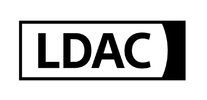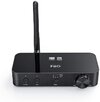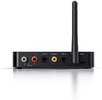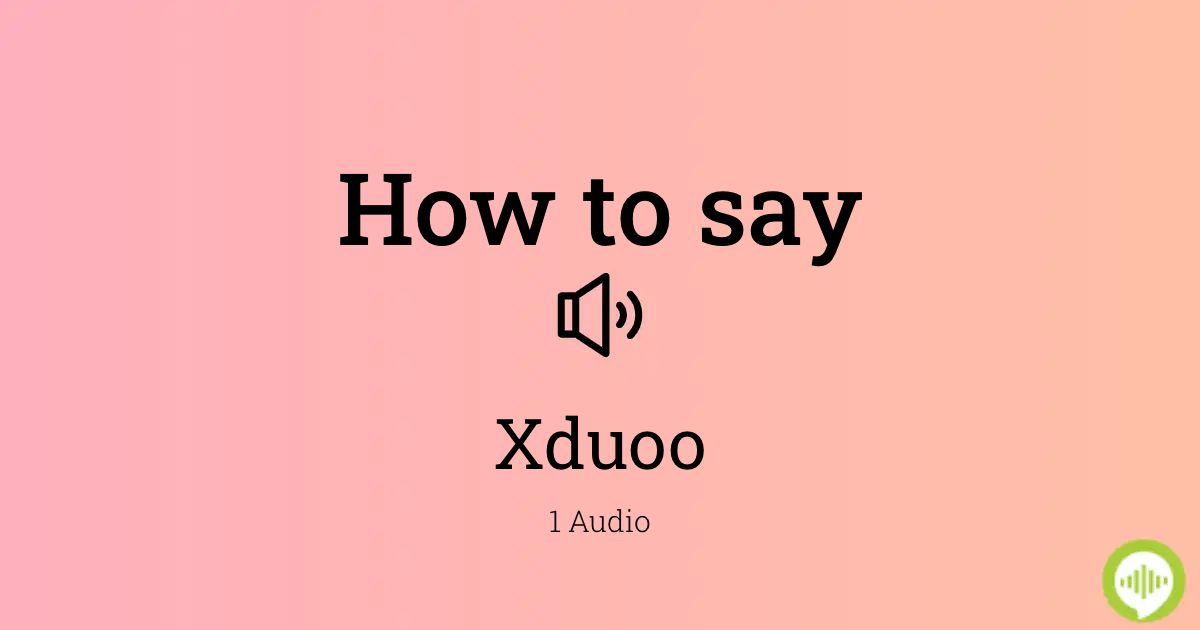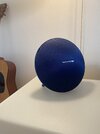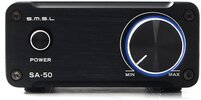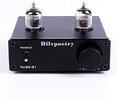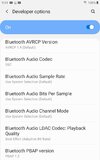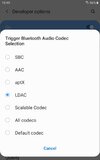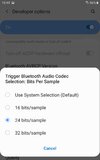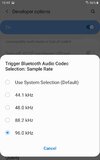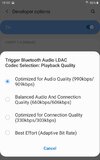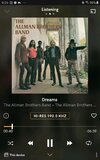On Friday afternoon a colleague of mine showed me his new Sony Noise Canceling headphones, the WH-1000XM3, which he bought to tune out the noise on flights. He has a trip to Florida next week:
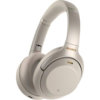
While noise canceling was the primary reason he bought these headphones, he came to me to ask about their Bluetooth spec, something he was unfamiliar with called LDAC. This Sony custom implementation was originally only available on the Sony Experia range of Android phones, and certain Walkman source players. But since the release of Android 8.0 Oreo it has quietly flown under the radar as available for other OEMs to implement should they choose to, as a core piece of the Android Open Source Project.
My colleague's phone is a Samsung Galaxy Note 8, and after pairing the new 1000XM3 with his phone's Bluetooth connection, an LDAC On/Off switch appeared in his Settings menu. Apparently Samsung has elected to bake the Sony LDAC version of the Bluetooth codec into their Oreo 8.0 implementation.
It's an impressive spec, if adoption takes off with other OEMs both on the source and speaker/headphone side of things, it will be safe to answer this thread's topic with an emphatic NO, not all Bluetooth sucks. This Sony codec handles Bluetooth wireless transmission of PCM up to 24-bit/96kHz (or 990kbps). You can even feed it 24/192 and the track still plays, however it will be downsampled (half the samples are simply discarded). This seemingly trumps the competing Qualcomm standard known as aptX HD, which tops out at 24/48kHz.
I listened to these headphones for about 15-20 minutes and came away quite impressed, though that's not to say some wouldn't prefer various good ole' fashioned passive 'phones that tether you with a wire to a source. But the world is changing quickly, and normal people (read: non-audiophiles) want the convenience as well as noise canceling. These run approximately 30 hours on their integral USB-C rechargeable battery.
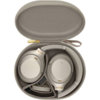
Nice travel piece for sure, I'll be curious to see if Sony's strategy of open-sourcing the codec gives them a real leg-up on aptX HD, or for that matter entices any large number of OEMs to include this tech in other headphones and Bluetooth speakers.
If Samsung is any indication it looks like it is happening, as Samsung is a direct Sony competitor, however their motivation there is differentiation with iOS and grabbing mobile handset market share from Apple, so that could be an example of a unique/special circumstance. But with Samsung's acquisition of Harman International in March 2017, there is at least the potential for licensed use of this LDAC codec in various other high-end brand equipment, both AKG and JBL come to mind.

While noise canceling was the primary reason he bought these headphones, he came to me to ask about their Bluetooth spec, something he was unfamiliar with called LDAC. This Sony custom implementation was originally only available on the Sony Experia range of Android phones, and certain Walkman source players. But since the release of Android 8.0 Oreo it has quietly flown under the radar as available for other OEMs to implement should they choose to, as a core piece of the Android Open Source Project.
My colleague's phone is a Samsung Galaxy Note 8, and after pairing the new 1000XM3 with his phone's Bluetooth connection, an LDAC On/Off switch appeared in his Settings menu. Apparently Samsung has elected to bake the Sony LDAC version of the Bluetooth codec into their Oreo 8.0 implementation.
It's an impressive spec, if adoption takes off with other OEMs both on the source and speaker/headphone side of things, it will be safe to answer this thread's topic with an emphatic NO, not all Bluetooth sucks. This Sony codec handles Bluetooth wireless transmission of PCM up to 24-bit/96kHz (or 990kbps). You can even feed it 24/192 and the track still plays, however it will be downsampled (half the samples are simply discarded). This seemingly trumps the competing Qualcomm standard known as aptX HD, which tops out at 24/48kHz.
I listened to these headphones for about 15-20 minutes and came away quite impressed, though that's not to say some wouldn't prefer various good ole' fashioned passive 'phones that tether you with a wire to a source. But the world is changing quickly, and normal people (read: non-audiophiles) want the convenience as well as noise canceling. These run approximately 30 hours on their integral USB-C rechargeable battery.

Nice travel piece for sure, I'll be curious to see if Sony's strategy of open-sourcing the codec gives them a real leg-up on aptX HD, or for that matter entices any large number of OEMs to include this tech in other headphones and Bluetooth speakers.
If Samsung is any indication it looks like it is happening, as Samsung is a direct Sony competitor, however their motivation there is differentiation with iOS and grabbing mobile handset market share from Apple, so that could be an example of a unique/special circumstance. But with Samsung's acquisition of Harman International in March 2017, there is at least the potential for licensed use of this LDAC codec in various other high-end brand equipment, both AKG and JBL come to mind.

